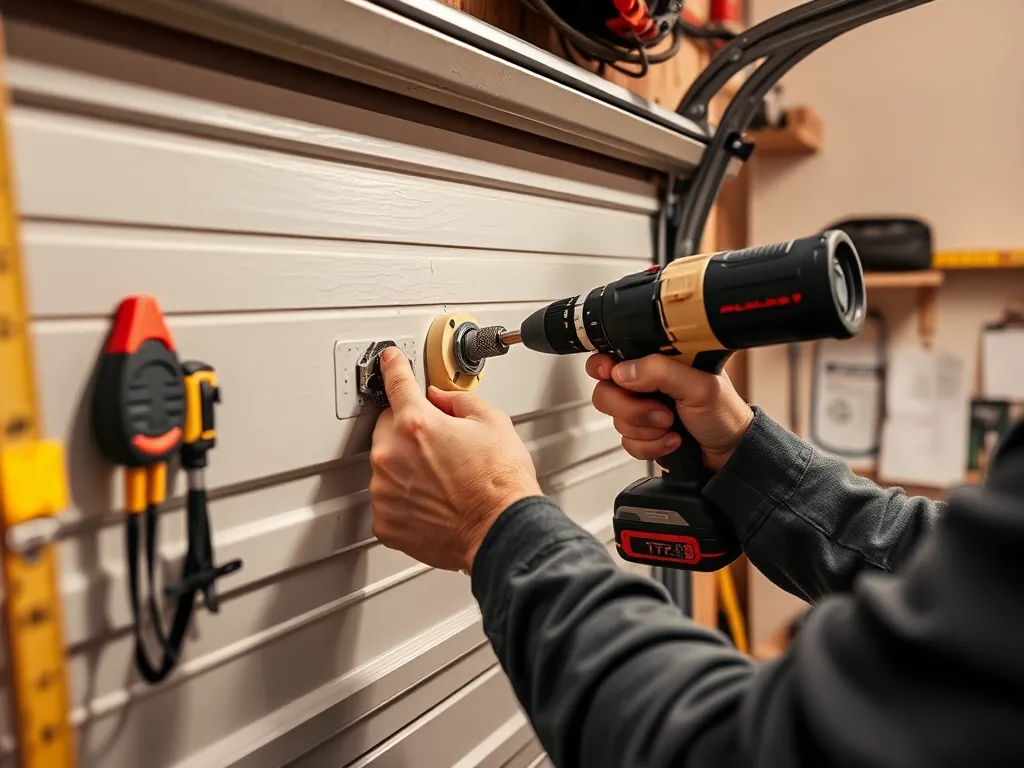Expert Garage Door Installation Techniques Revealed

Garage Door Installation Techniques
Garage Door Installation Techniques are essential for ensuring the safety, functionality, and longevity of your garage door. A correctly installed garage door not only enhances the aesthetic value of your home but also adds to its security. This article will explore various techniques that can be employed during the installation process, ensuring a seamless fit and efficient operation.
The process of Garage Door Installation Techniques involves careful planning, precise measurements, and the right choice of materials. Understanding each step—from selecting the right garage door to the actual installation methods—can streamline the process and help avoid common pitfalls. This comprehensive guide is designed to assist DIY enthusiasts and those seeking to hire professionals in achieving optimal results.
Always observe necessary safety precautions when working with heavy machinery.
Moreover, Garage Door Installation Techniques must also consider the safety and maintenance of the door post-installation. Proper installation not only means fitting the door correctly but also making sure that all safety mechanisms are in place to protect users. With the right tools and techniques, anyone can learn how to install a garage door effectively.
Throughout this article, we will discuss the preparation steps required before installation, the essential tools needed, a step-by-step guide for installation, common troubleshooting tips, and vital maintenance advice. By following these guidelines, you can ensure a successful garage door installation that stands the test of time.
To ensure your door operates smoothly, proper frame alignment is crucial.
Whether you're updating your existing garage door or installing a new one, understanding Garage Door Installation Techniques will empower you to achieve a successful and safe installation. Let’s dive into the nuts and bolts of this essential home improvement project.
Preparation Steps for Garage Door Installation
Before embarking on your garage door installation journey, accurate preparation is key. Begin with measuring the garage door frame meticulously. Use a tape measure to determine the width and height of the opening, noting any irregularities. This step ensures that you choose a garage door that fits perfectly, as improper sizing can lead to complications during installation.
Next, choose the right garage door material that aligns with your needs and budget. Options include steel, wood, and fiberglass, each offering unique benefits. Steel is durable and low-maintenance, while wood provides a classic aesthetic that requires more upkeep. Selecting the right material will influence both installation techniques and the overall longevity of the door.
Moreover, gather all the necessary tools for installation before starting. Essential tools include a drill, socket set, level, measuring tape, and safety goggles. Ensuring you have everything on hand simplifies the installation process and minimizes interruptions.
During spring installation, it's important to follow the manual carefully.
Finally, always ensure safety precautions are in place. Assess your workspace for potential hazards and wear appropriate safety gear. Furthermore, it’s wise to have a helper during installation, as garage doors can be heavy and unwieldy, significantly increasing the risk of injury if not handled correctly.
Tools Required for Garage Door Installation
Having the right tools is crucial for effective garage door installation. Essential tools include a drill, a torque wrench, a level, a measuring tape, wire cutters, safety glasses, and a step ladder. Each tool serves a specific purpose and contributes to a smooth installation process.
When selecting power tools, prioritize quality and reliability. Opt for brands that are known for their durability. Make sure that any power tools are suited for the tasks at hand, especially in terms of voltage and torque settings, particularly if installing heavy-duty doors.
In addition to installation tools, safety gear is a must. Wearing safety goggles, gloves, and a hard hat minimizes the risk of injury and protects against debris and accidents. Even though installing a garage door can seem straightforward, safety should always be your first priority.
Don’t forget about maintenance tools for future upkeep. A simple toolkit containing wrenches, a screw driver set, and lubrication supplies such as silicone spray or garage door lubricant will be essential to keeping your garage door operating smoothly after installation.
Step-by-Step Garage Door Installation Guide
The installation process begins with unpacking your garage door components and organizing them by part. Follow the manufacturer's instructions closely as they may have specific requirements. Generally, the first step is to install the tracks on each side of the door frame, ensuring they are level and aligned.
Common pitfalls to avoid include rushing the process, neglecting to check if the tracks are aligned correctly, and failing to test the door's balance. Take your time, double-check measurements, and always test as you progress to catch issues early.
Adjusting the garage door's tracks and springs is another critical step that requires precision. Follow the manufacturer's guidance to set the tension accurately. This ensures that the door opens smoothly without excessive strain on any part, prolonging the life of both the door and the opening mechanism.
Finally, conduct several checks post-installation to confirm the door's functionality. Ensure that it opens and closes smoothly, the sensors function correctly, and that all bolts are tightened properly. This final inspection will help you identify any adjustments needed before putting the door into daily use.
Common Troubleshooting During Garage Door Installation
One common issue during installation is alignment. If the door doesn’t sit level or seems crooked, recheck the positioning of the tracks. Adjusting the brackets may be necessary to ensure everything is straight.
Another frequent problem arises from inadequate power supply during operation. If the door opener is not functioning correctly, check the power source and all connections to ensure they're secure.
If your garage door is noisy after installation, it may require additional lubrication on moving parts. Ensure that all rollers and hinges are adequately lubricated to minimize noise and maximize door efficiency.
Lastly, if the sensors are misaligned, the garage door may not operate correctly. Check the positioning of the sensors and make adjustments to ensure they are directly facing each other and free of obstructions.
Maintenance Tips for Installed Garage Doors
Perform routine checks for the functionality of your garage door; inspect for signs of wear, rust, or any mechanical issues. Regular checks every few months keep components in good working order.
An essential part of garage door maintenance is lubrication. Apply lubricant to the moving parts, such as rollers and hinges, to facilitate smooth operation. Regular lubrication extends the lifespan of your garage door system.
Pay attention to signs of wear and tear. Look out for frayed cables, rusted components, or when the garage door struggles to open or close. Early detection can save you from more costly repairs down the line.
Lastly, know when to call a professional for maintenance. If you encounter issues that you’re unable to resolve on your own, or if the door system needs more complex repairs, seeking professional help may be the best course of action.
